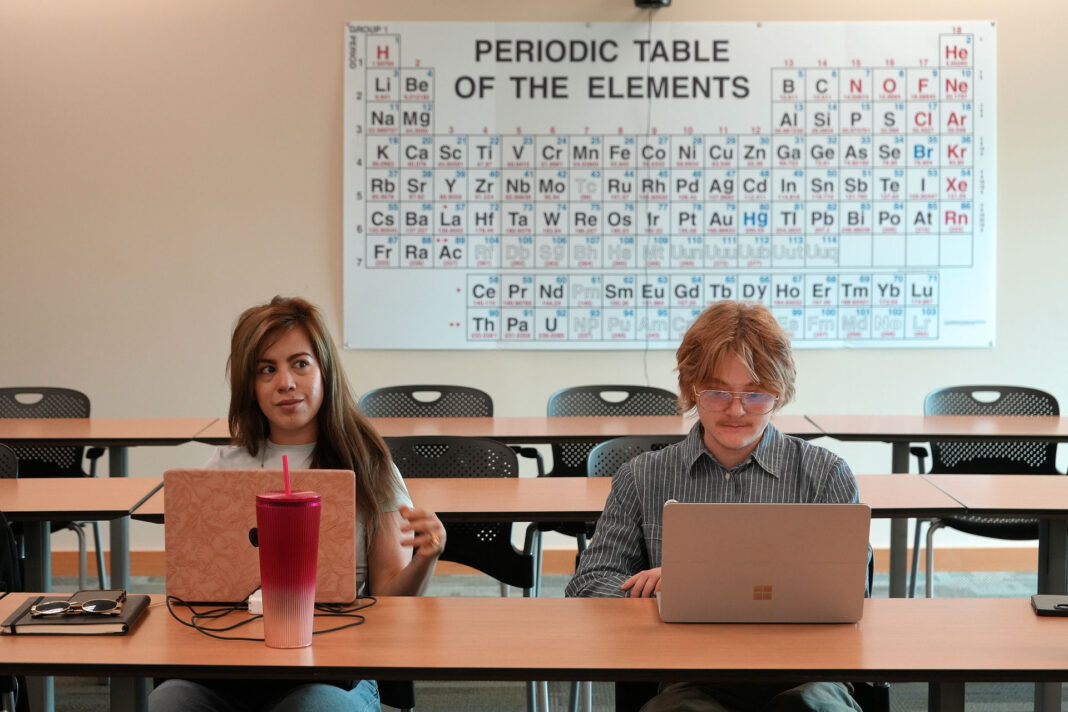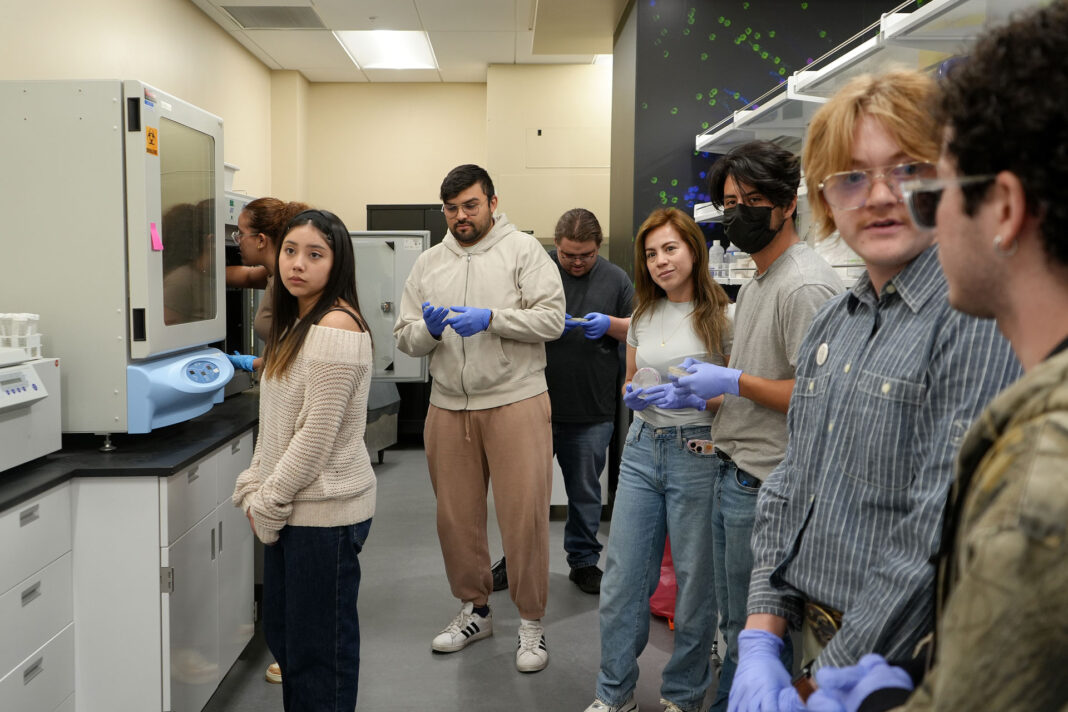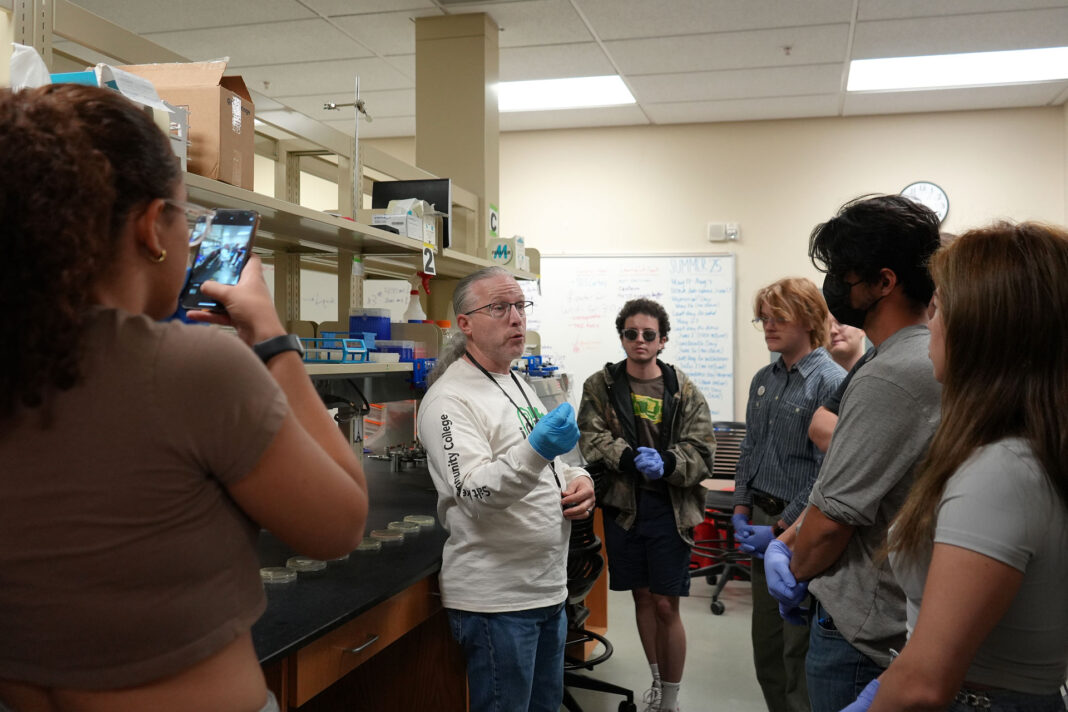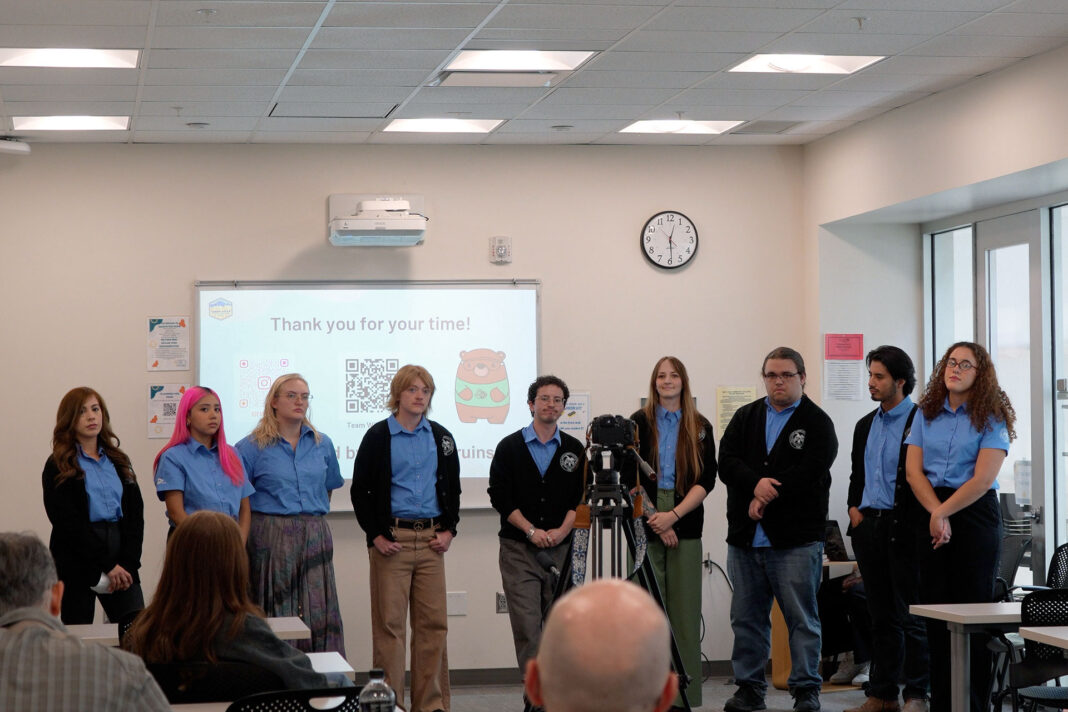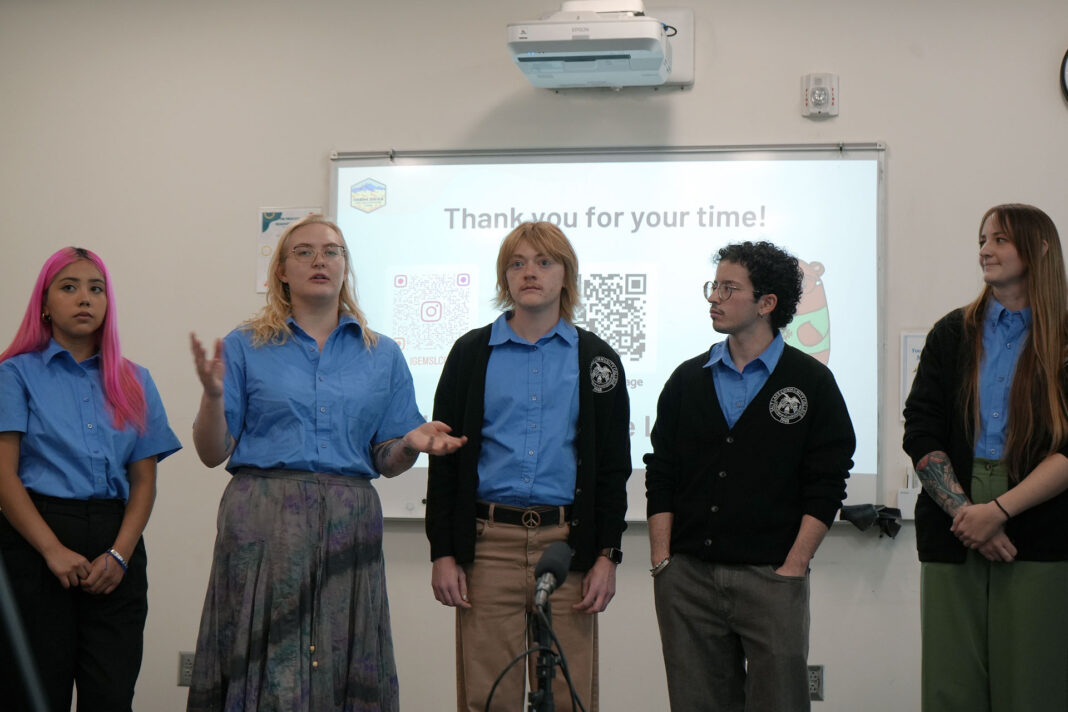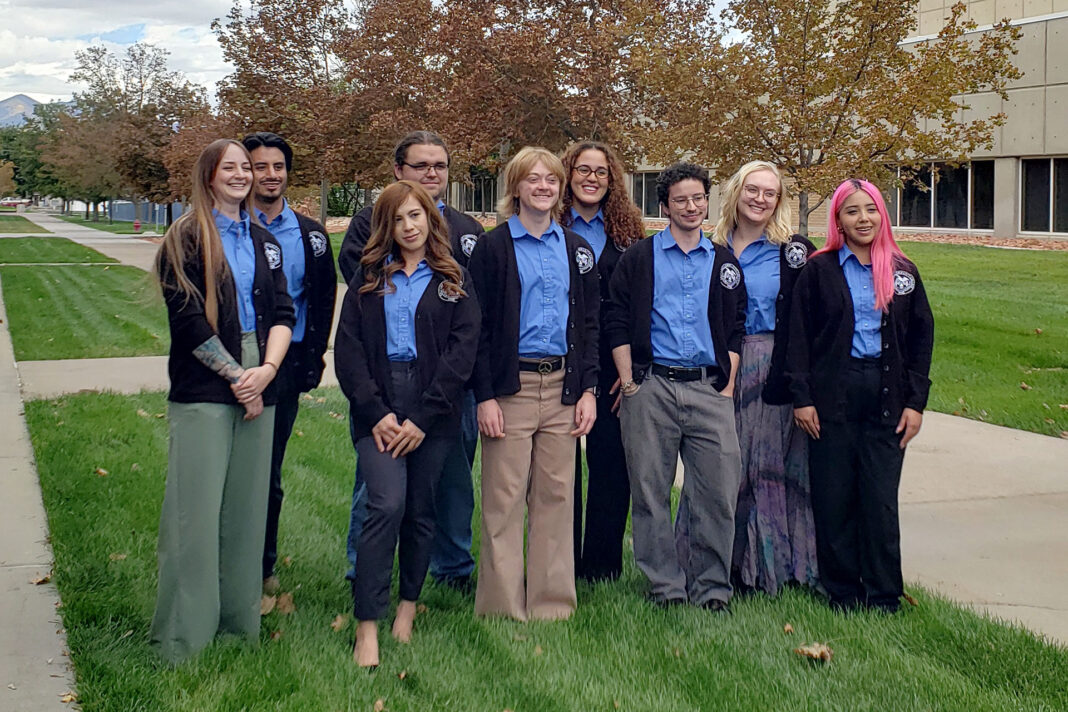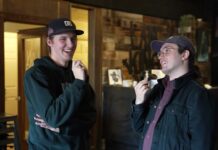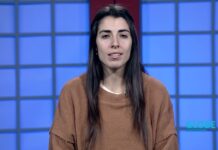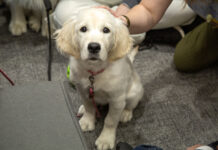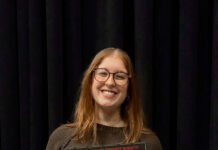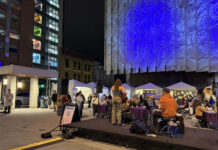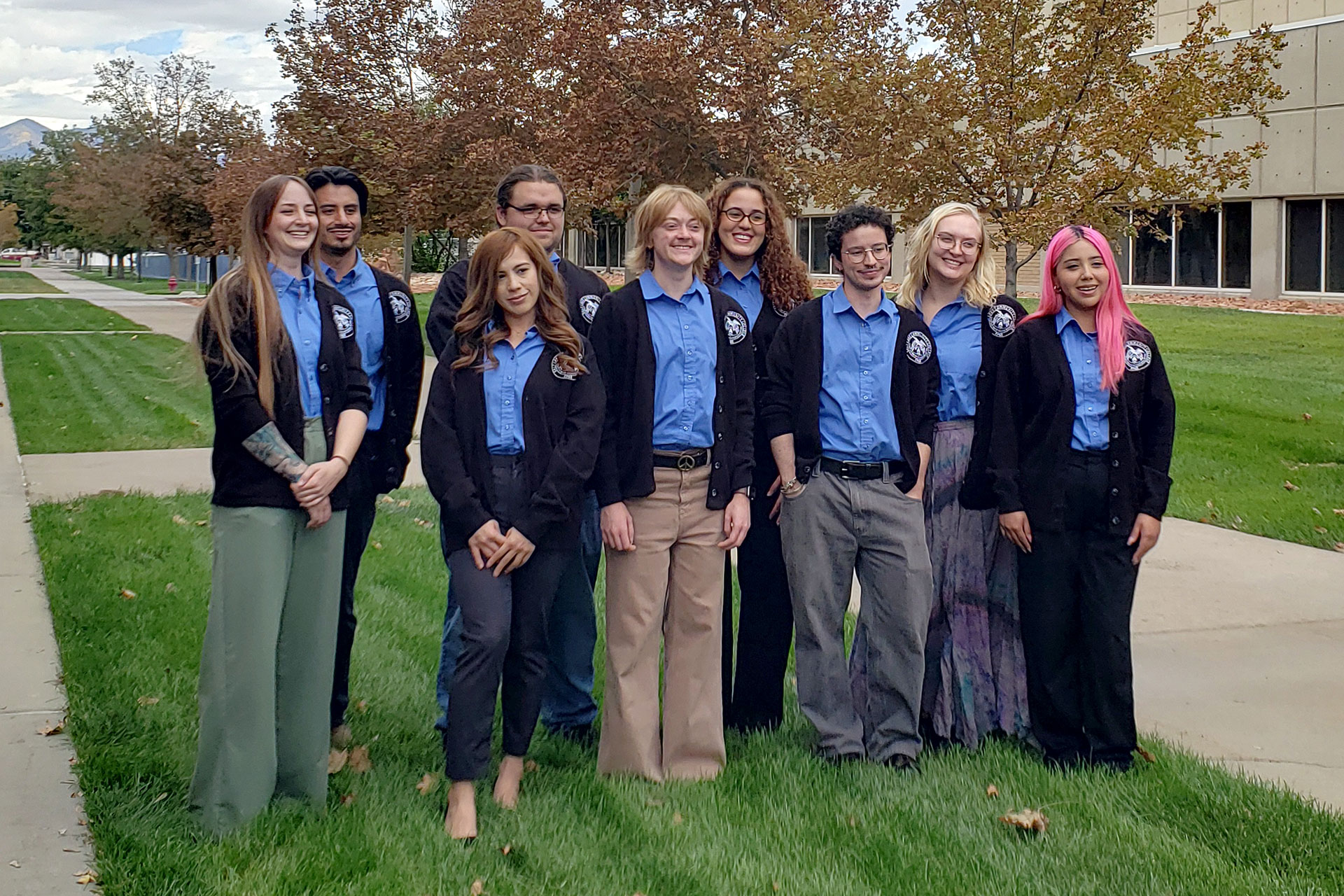
A group of Salt Lake Community College students have been preparing for a global science competition that will be held next week in Paris, France.
The Lactobruins presented a preview of their iGEM project to SLCC President Greg Peterson and other SLCC community members on Oct. 3 at the Taylorsville Redwood campus, impressing all attendees. The dry run provided the team with a chance to refine their presentation ahead of the worldwide competition, which takes place Oct. 28-31.
Craig Caldwell, the dean of the School of Science, Mathematics and Engineering, said the iGEM competition uses an extensive rubric, with judges evaluating a team’s science and how well their science and experimental designs are structured.
“There’s a lot of criteria and it is a very rigorous competition. I think this team has done remarkable work coming together,” said Caldwell. “We’ve got people that are both science-based and non-science-based and they didn’t know each other before this thing started.”
In addition, the Lactobruins will be asked about their community engagement and impact, their organizational skills, and the components of the work that is being done.
iGEM, short for International Genetically Engineered Machine, is a worldwide organization that believes in synthetic biology and developing a global workforce, while fostering a collaborative and cooperative community that focuses on creating solutions for a healthier and sustainable future.
Synthetic biology is a field of science that combines biology and engineering. It uses various disciplines to create new biological parts, devices, or systems, or to improve existing ones. The goal is to solve problems in areas like medicine, agriculture and the environment.
The Lactobruins have come up with a way to deal with the side effects of pollutants on people’s lungs.
Breathing polluted air exposes our lungs to harmful molecules called reactive oxygen species, or ROS, which can damage our cells. While our bodies naturally produce an antioxidant called glutathione to protect against this damage, heavy pollution can overwhelm these defenses.
To tackle this, the Lactobruins have engineered Lactobacillus to detect ROS and release glutathione right when it’s needed.
Lane Law, staff STEM research manager who is serving as a principal investigator for the team, was impressed with their progress since the original presentation.
“It’s pretty impressive. We did a run-through last night [Oct. 2] and the change from last night to this [Oct. 3 presentation] is really remarkable. They’ve learned a lot,” said Law. “There is so much more poise and confidence. I’m really proud of them. They have done amazing. We’re excited to be able to go and we’re going to represent SLCC well.”
Liz Radley, who does outreach for science, math and engineering at SLCC, attended the presentation. She said the Lactobruins demonstrated such professionalism that they matched the level of presenters from major research universities.
“They answered questions very confidently. I think, ‘what an exciting opportunity for students at a community college to share research at an international level,’” said Radley.
John Flood, an assistant professor in the chemistry department, said the Lactobruins are solid and well-coordinated. Each student knew their role and contributed without interrupting each other.
“They’ve got a good vision. Their transitions were effortless. It’s clear they have a strong team foundation,” said Flood. “The science [behind the project] went over my head for the most part but they seem very confident in what they are doing. And I’m glad someone is addressing the issue of air pollution in Utah.”
Christina Souknarong, the principal investigator/advisor, is also a student success manager and a STEM learning adjunct professor in Ethnic Studies in the psychology department. She remarked on the short timeframe the Lactobruins had to complete and prepare their project.
“I think they did a magnificent job. Most [teams] have a year, if not a year and a half, to put this together. They managed to put it together in six months,” Souknarong said. “I am really very proud of them, especially students here at SLCC. They’ve done so well.”
Caldwell complimented the team on their growth, especially how they’ve learned to rely on each other first for support and problem-solving before seeking help from coaches or faculty.
“You can see that there has been growth. In my one-on-one conversations with the team members, they’ve expressed to me how much they’ve learned to lean on each other,” said Caldwell. “So when they need help, when they want something, their first instinct is to go to their team members before they go to coaches or faculty. I’m very proud of that.”
Caldwell said the outcome of the competition is more about the experience than the awards.
“We’re hearing right now that employers want folks that can communicate and show that they can work in teams. I think this is clearly what they [the Lactobruins] are showing. They are ready as anybody can be at this point. I am confident in them. I know they’re going to represent us well.
“I’m not too worried really about the outcomes of the judging. I want them [the students] to go and have an experience in a large group of people that are science-oriented and to feel the excitement of what’s possible. And that’s what they’re going to get out of this. I’m much more interested in that than I am in the gold medals. If those medals come, wonderful, but that’s not really the point,” Caldwell ended.
The Lactobruins leave for Paris on Saturday, Oct. 25.
MORE: Watch an interview with Lactobruins team members on this episode of Bruin Lens.


